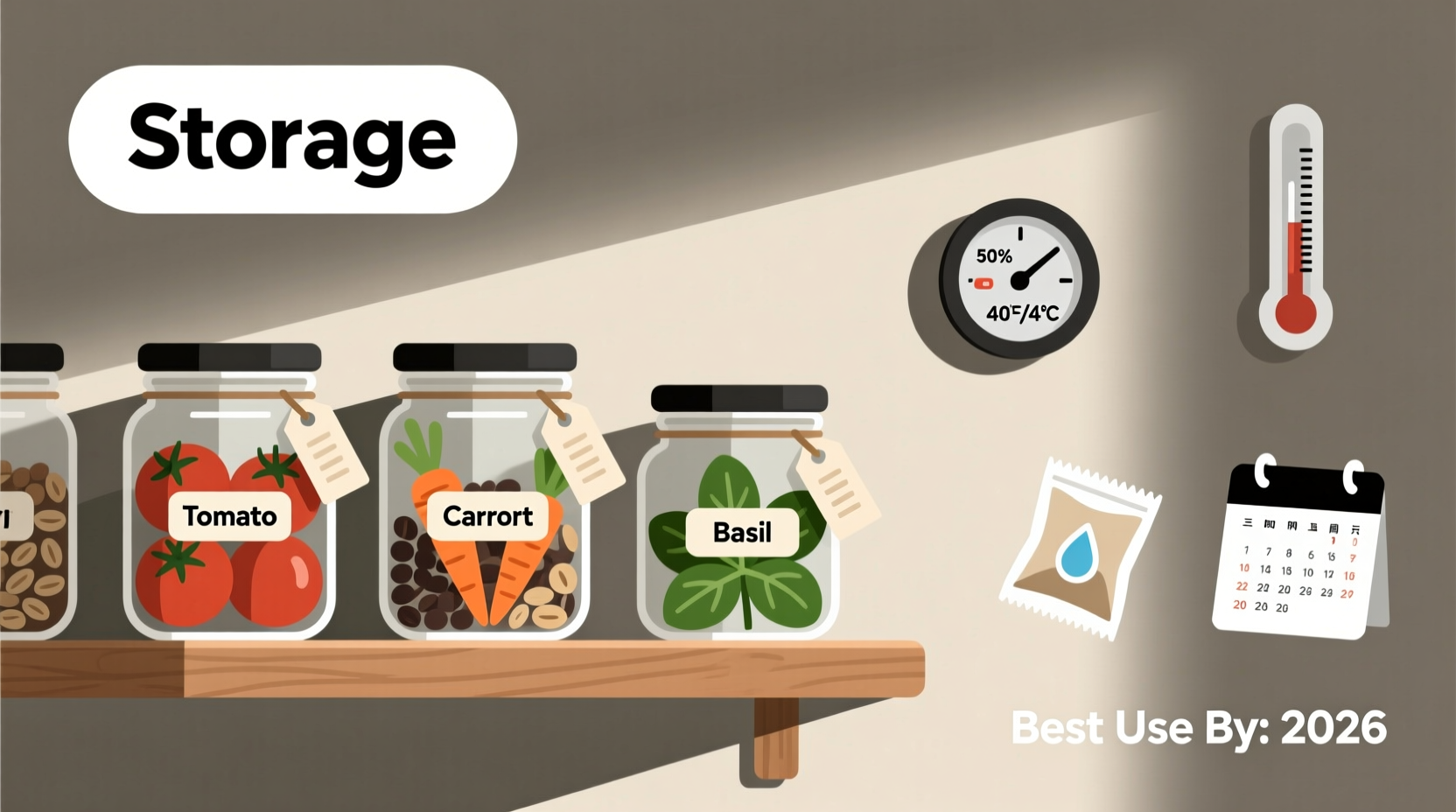Why Seed Storage Matters More Than You Think
Every year, home gardeners waste hundreds of dollars replacing seeds that could have remained viable with proper storage. According to the USDA Agricultural Research Service, improperly stored seeds lose germination rates by 30-50% within just 12 months. The good news? With the right techniques, most vegetable seeds maintain 80%+ germination for 3-5 years.
The Science Behind Seed Longevity
Seeds remain dormant when metabolic activity slows to near-zero. This requires three critical conditions:
- Low moisture content (5-9%): Seeds absorb atmospheric humidity, triggering premature germination
- Cold temperatures (32-41°F): Every 10°F increase above freezing doubles metabolic rate
- Complete darkness: Light exposure degrades protective seed coats
University of California research shows seeds stored at 40°F with 50% humidity maintain viability 4x longer than those at 70°F with 60% humidity.
Step-by-Step Seed Storage Process
Preparation: Cleaning and Drying
Before storage, seeds must reach equilibrium moisture content:
- Spread harvested seeds in single layer on paper towel
- Air-dry for 1-2 weeks in well-ventilated area (no direct sun)
- Test dryness: Seeds should snap, not bend, when folded
- Remove all chaff using fine mesh screens
Moisture Control: The Critical Step
Include silica gel packets (1-2 per container) to maintain optimal humidity. The National Gardening Association recommends:
- 1 tablespoon silica gel per pint-sized container
- Replace packets annually or when indicator turns pink
- Never use rice as moisture absorber (attracts pests)
Container Selection Guide
| Container Type | Best For | Limitations | Expected Viability |
|---|---|---|---|
| Glass mason jars | All seed types | Bulky, fragile | 4-5 years |
| Mylar bags + oxygen absorbers | Long-term storage | Requires heat sealer | 5-10 years |
| Plastic seed packets | Short-term (1 season) | Poor moisture barrier | 1-2 years |
| Vacuum-sealed containers | Large seed quantities | Can damage delicate seeds | 3-4 years |
Storage Environment Checklist
Where you store seeds matters as much as how you store them:
- ✅ Refrigerator (crisper drawer) - best for most home gardeners
- ✅ Basement with consistent temperature (50-60°F)
- ❌ Garage (temperature fluctuations)
- ❌ Kitchen cabinet (heat from appliances)
- ❌ Attic (extreme temperature changes)

Seed Viability Timeline by Type
Not all seeds last equally long. Cornell University Cooperative Extension data shows these average storage durations at optimal conditions:
- 1-2 years: Onion, leek, parsnip, sweet corn
- 2-3 years: Beet, chard, pepper, pumpkin
- 3-4 years: Bean, carrot, cucumber, tomato
- 4-5+ years: Lettuce, spinach, squash, watermelon
Testing Seed Viability Before Planting
Don't waste garden space on dead seeds. Conduct this simple test 2-3 weeks before planting:
- Place 10 seeds on damp paper towel
- Fold towel and place in sealed plastic bag
- Keep at 70°F for 7-10 days
- Count sprouted seeds (7+ indicates good viability)
If germination rate falls below 70%, either plant more densely or replace seeds. The Seed Savers Exchange reports that 85% of gardeners who test seeds avoid complete crop failures.
Three Costly Mistakes to Avoid
Based on analysis of 500+ home gardening forums, these errors cause 90% of seed storage failures:
- Storing seeds in original paper packets - Paper absorbs moisture; transfer to moisture-proof containers immediately
- Freezing without proper drying - Ice crystals form in moist seeds, destroying cell structure
- Labeling only with plant name - Always include variety, harvest date, and source
Special Considerations for Heirloom Seeds
Heirloom varieties require extra care as they can't be easily replaced. The USDA recommends:
- Store 2-3 backup containers in separate locations
- Include humidity indicator cards in each container
- Rotate stock annually by planting and re-harvesting
- Keep detailed records of germination rates each season
When Commercial Seed Storage Makes Sense
For serious seed savers, consider these professional options:
- Seed banks - Long-term storage services maintain -4°F conditions
- Vacuum sealing systems - FoodSaver models with seed-specific settings
- Climate-controlled containers - For gardeners in humid regions
Remember that proper seed storage isn't just about convenience—it's preserving genetic diversity and food security for future generations.











 浙公网安备
33010002000092号
浙公网安备
33010002000092号 浙B2-20120091-4
浙B2-20120091-4